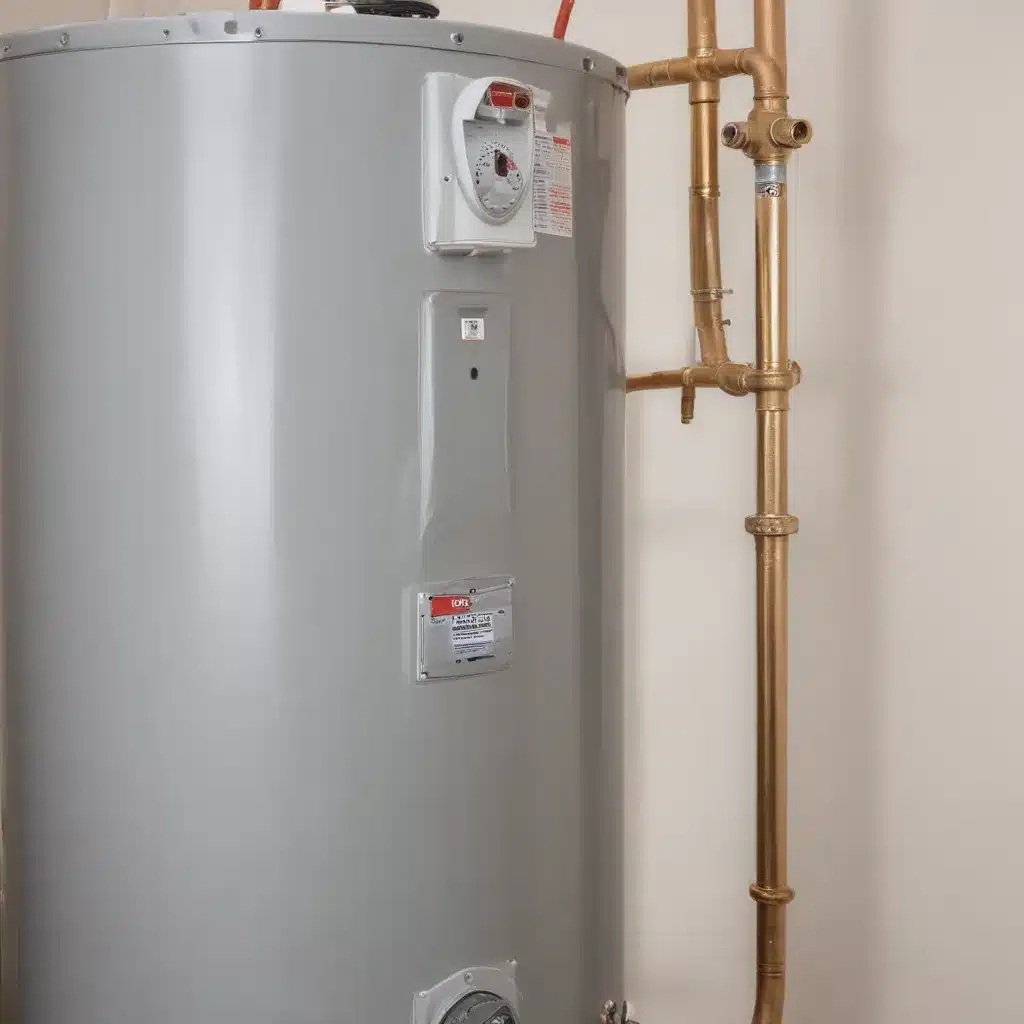
As an experienced water heater specialist, I’ve seen firsthand how proper maintenance and timely repairs can significantly extend the lifespan of aging water heaters. We learned this the hard way when dealing with complex water heater issues… One of the most critical components in this process is the anode rod, a sacrificial element that protects the tank from corrosion. In this comprehensive guide, we’ll explore the importance of proactive anode rod replacement and other essential water heater maintenance techniques to help you keep your system running smoothly for years to come.
Understanding the Role of the Anode Rod
The anode rod is a crucial component within your water heater, designed to attract and corrode in place of the tank itself. Over time, this rod becomes depleted as it sacrifices itself to protect the tank from the corrosive elements in your water supply. Neglecting to replace the anode rod can lead to the development of rust and, ultimately, a compromised tank.
As the anode rod deteriorates, it can no longer effectively shield the tank, allowing corrosion to take hold. This not only compromises the structural integrity of the tank but also leads to the introduction of rust particles into your hot water supply, resulting in discolored and potentially contaminated water.
Recognizing the Signs of a Failing Anode Rod
Homeowners should be vigilant in monitoring the condition of their anode rod, as a timely replacement can mean the difference between a well-functioning water heater and a costly emergency repair or replacement. Some telltale signs that your anode rod may be nearing the end of its lifespan include:
Discolored or Rusty Water: If you notice brown, reddish, or muddy-colored water coming from your hot water taps, it could be an indication that the anode rod is no longer effectively protecting the tank, allowing rust to seep into the water supply.
Reduced Hot Water Capacity: As the anode rod deteriorates, it can no longer provide adequate protection, leading to a buildup of sediment and mineral deposits within the tank. This can result in a diminished hot water supply and decreased efficiency.
Unusual Noises: If your water heater starts making popping, rumbling, or hissing sounds, it may be a sign that sediment has accumulated, causing the heating elements to work harder and creating these audible disturbances.
Leaks: A failing anode rod can eventually lead to rust or corrosion, causing small leaks around the tank or fittings. If you notice any signs of moisture or dripping, it’s essential to have a professional inspect the unit.
Proactive Anode Rod Replacement
To double-check that the longevity of your water heater, it’s recommended to replace the anode rod every 3-5 years, depending on the quality of your local water supply. This proactive approach can significantly extend the life of your tank and prevent the need for a premature water heater replacement.
When replacing the anode rod, it’s crucial to follow the manufacturer’s instructions and use the correct replacement part for your specific model. This may require some basic plumbing skills, such as shutting off the water supply, draining the tank, and safely removing and replacing the old anode rod.
If you’re not comfortable performing this task yourself, it’s best to enlist the help of a licensed and experienced plumber. They can safely and efficiently replace the anode rod, ensuring it’s properly installed and the system is functioning at its best.
Complementary Maintenance Practices
While anode rod replacement is a critical component of water heater maintenance, it’s important to pair it with other essential practices to maximize the lifespan and efficiency of your system. These include:
Flushing the Tank
Regularly flushing your water heater tank can help remove accumulated sediment and minerals, which can otherwise lead to decreased efficiency, reduced hot water capacity, and even premature tank failure. Aim to flush your tank at least once a year, following the manufacturer’s guidelines.
Testing the Temperature and Pressure Relief Valve
The temperature and pressure relief valve is a crucial safety feature of your water heater, designed to release excess pressure and prevent the tank from bursting. Periodically testing this valve by lifting the lever and ensuring it’s functioning properly can help avoid potential hazards.
Adjusting the Thermostat
Setting your water heater’s thermostat to the recommended temperature of 120°F (49°C) can not only prevent scalding but also improve energy efficiency and reduce the buildup of mineral deposits.
By combining these maintenance practices with proactive anode rod replacement, you’ll be well on your way to extending the lifespan of your water heater and ensuring reliable, energy-efficient hot water for your home.
Choosing the Right Replacement Water Heater
When the time comes to replace your aging water heater, it’s important to carefully consider your options to find the most suitable unit for your needs. Key factors to consider include:
Energy Efficiency: Look for water heaters with high Energy Star ratings to maximize energy savings and reduce your carbon footprint.
Tank vs. Tankless: Tankless water heaters offer on-demand hot water and can be more energy-efficient than traditional tank models, but may require additional installation considerations.
Capacity and Recovery Rate: double-check that the new water heater can meet the hot water demands of your household, taking into account the number of bedrooms and bathrooms.
Professional Installation: Regardless of the type of water heater you choose, it’s essential to have it installed by a licensed and experienced plumber to double-check that optimal performance and safety.
By staying proactive with anode rod replacement and other essential maintenance tasks, you can significantly extend the lifespan of your water heater and avoid the need for costly and disruptive emergency replacements. For more information on water heater maintenance, plumbing solutions, and installation insights, be sure to visit waterheaterpick.com.
Tip: Use insulation blankets to improve energy efficiency

